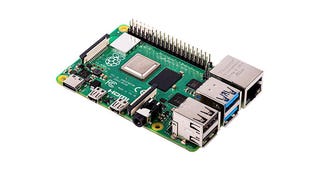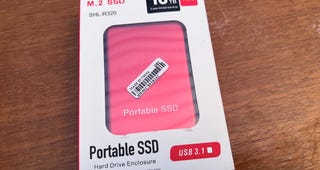
China can help drive global progress in quantum computing
Asian country has began investing in quantum technology and is at a similar starting point with other economic powers in this field, says Shanghai-born Turing Award winner Andrew Yao.

Asian country has began investing in quantum technology and is at a similar starting point with other economic powers in this field, says Shanghai-born Turing Award winner Andrew Yao.

Our brains adapt to how we use them - so what does our love affair with tech mean for our minds?

As the world becomes used to viewing digital content in three dimensions, scientists are working on ways that we can reach out and "touch" them as well. A group of researchers at the University of California, San Diego, for example, is working on a solution -- called Heads-Up Virtual Reality (HUVR) -- that combines a 3D HDTV, a half-silvered mirror, and a touch-feedback device so the user can manipulate a projected image like it was a real object.

Moore's Law doesn't stand a chance when the state-of-the-art at the top end is all that counts.

One environmental organization thinks it could be the rare earth elements needed to make high tech devices from batteries to LEDs. From MRI scanners to catalytic converters.

Cubric's odyssey

The European market for smart fabrics and interactive textiles (SFIT) represents about 300 million euro today and is growing at a yearly rate of about 20%. These smart textiles are used in 'clothes that monitor your heart, measure the chemical composition of your body fluids or keep track of you and your local environment promise to revolutionize healthcare and emergency response.' This is why the European Union has been funding several technological projects under the SFIT cluster umbrella for a grand total of 66 million euro. But read more...

A team of U.S. researchers has developed nano-sized 'cargo ships' to target and destroy tumors. They say that these 'ships can sail throughout the body via the bloodstream without immediate detection from the body's immune radar system and ferry their cargo of anti-cancer drugs and markers into tumors that might otherwise go untreated or undetected.' So far, these nano-cargo-ships have only been tested on mice. But it is possible that they could be used one day to more effectively deliver toxic anti-cancer drugs to tumors. But read more...

The MiniAture Robot for Surgical Applications (MARS) is already FDA-approved for orthopedic and spinal surgery. Now, Israeli scientists have given it GPS accuracy for keyhole neurosurgery. This is a minimally invasive procedure used for tumor biopsies or deep brain stimulation, but you need to know exactly where you operate. So the researchers have superimposed 'MRI or CT images of the patient's brain over an image of the current surgical situation.' This robot, which weighs about 230 grams, will get an additional arm to guide a needle or a probe weighing about 150 grams. It could appear on the market within 18 months, according to the team, and I hope it will be more accurate than an ordinary GPS device.

Company says it will launch first removable drive, with a capacity of 300GB and a throughput of 160mbps, next year.
 Google finally launches its Find My Device network. Here are the Android models that support it
Google finally launches its Find My Device network. Here are the Android models that support it
 3 million smart toothbrushes were not used in a DDoS attack after all, but it could happen
3 million smart toothbrushes were not used in a DDoS attack after all, but it could happen
 Five CES 2024 products I'd buy as soon as they'd take my money
Five CES 2024 products I'd buy as soon as they'd take my money
 Raspberry Pi 4 Model B review: A capable, flexible and affordable DIY computing platform
Raspberry Pi 4 Model B review: A capable, flexible and affordable DIY computing platform
 Which Microsoft Surface PC is right for you?
Which Microsoft Surface PC is right for you?
 Inside a fake $20 '16TB external M.2 SSD'
Inside a fake $20 '16TB external M.2 SSD'